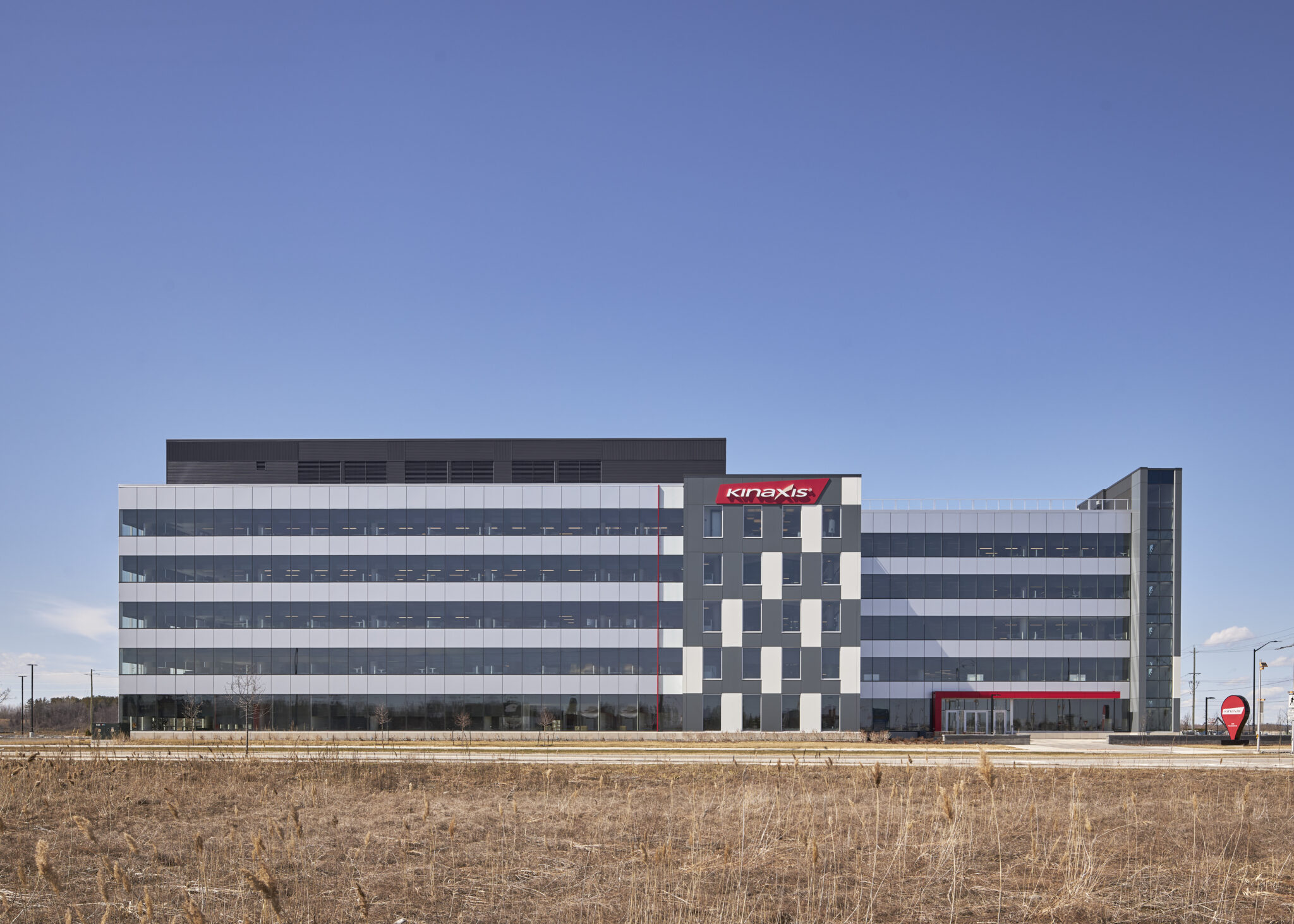Blue Yonder, a leading supply chain solutions provider, today announced the release of its largest product update in the history of the company, launching the first set of interoperable solutions across the entire supply chain – from planning to warehouse, transportation, and commerce – delivered on the company’s Luminate® Cognitive Platform. Leaning into interoperability allows Blue Yonder to provide its customers with increased productivity, reduced waste, and more resilient supply chains.
“Today’s supply chains are operated by a fragmented ecosystem of legacy solutions, with many being stitched together over time with custom configurations and code,” said Duncan Angove, CEO, Blue Yonder. “While many supply chain solution providers claim to offer end-to-end capabilities, it is typically confined to planning or execution spaces where they’ve integrated their own product suites. Blue Yonder is changing that. With this release, we are redefining end-to-end supply chains, and establishing a new category of solutions with interoperable capabilities aligned with our vision to create the supply chain operating system for the world.”
End-to-End Interoperability
As manufacturers, logistics companies, suppliers, and retailers look to build greater resilience and mitigate market volatility in their supply chain, they are often hampered by: siloed business processes and communications breakdowns, lack of visibility, disconnected solutions, and burdensome workflows across planning, transportation, warehouse, e-commerce, and last mile fulfillment. This can lead to inventory waste, high costs, loss of sales, slow responsiveness, lack of resilience and more.
Solving these supply chain challenges requires companies to coordinate and streamline planning and execution management across the end-to-end ecosystem. This includes:
● Orchestrating sourcing, production, logistics and network strategies in a single operating system to shorten lead times, improve service levels, optimise operational efficiencies, maximise demand, and reduce cost.
● Aligning predicted customer demand, network capacity, warehouse capacity, labour capacity, and transportation scheduling prior to sourcing or allocating goods for seamless inventory flow and reduced overhead.
● Building logistics loads that factor in real-time, on-shelf inventory to balance customer demand and waste, generating maximum revenue and margin.
Blue Yonder’s interoperable solutions answer these challenges by:
● Connecting processes, systems, and data seamlessly across Blue Yonder’s Supply Chain Planning and Execution solutions, providing a smarter, more scalable, real-time digital twin to streamline and accelerate enterprise-wide decision-making.
● Offering the end-to-end visibility needed to understand how decisions or actions impact adjacent teams so businesses can work synchronously toward a unified goal.
● Deeply embedding artificial intelligence (AI) and machine learning (ML) within the systems to drive decisioning, recommendations, and actions to support a future of autonomous supply chains.
● Ensuring all solutions connect through a single source of data, allowing true real-time collaboration across functions.
The result is more agile, coordinated decision-making that reduces costs, increases revenue, and improves customer loyalty.
Interoperability Enabled by Cutting-Edge Technology Innovations
Blue Yonder’s interoperable solutions are made possible as a result of three key strategic investments by the company:
1) Cloud Native Architecture on a Cognitive Platform: Blue Yonder’s Luminate ® Cognitive Platform is the industry’s premiere cloud-native supply chain platform, delivering enterprise-level speed, scale and security with upgrade-safe extensibility across workflows, data models, and functions. The platform offers infinite intelligence with unconstrained computing power, a single source of truth, and a reimagined user experience. Because Blue Yonder’s cloud-native applications all run on this centralised platform, this then allows companies to make faster, higher-quality decisions; eliminate data siloes; uplevel team performance by increasing productivity and accelerated adoption; and unlock capacity by leveraging the power of embedded AI.
2) Composable Microservices: A composable approach enables companies to augment and enhance existing technologies with Blue Yonder’s industry-leading IP and patented solutions — transforming business functions at the speed and scale that’s right for each company’s business. Blue Yonder’s composable microservices are small, deployable components that each offer a discrete set of capabilities, seamlessly integrated on connected workflows to solve specific functional needs, and interoperable with existing Blue Yonder solutions so businesses can innovate without the need to rip and replace existing investments. With Blue Yonder, businesses can start with the application stack they need today knowing they can easily add capabilities they want, when they’re ready. And instead of lengthy monolithic projects, Blue Yonder offers Composable Journeys, which are implementation paths tailored to the specific vision and budget of each customer and rolled out in phases that can provide expedited time to value.
3) Platform Data Cloud, Powered by Snowflake: Blue Yonder is among the first enterprise supply chain solutions companies building applications to natively run on the Snowflake Data Cloud. Blue Yonder’s Platform Data Cloud, Powered by Snowflake, makes it easy to deliver the right data, at the right location, at the right time by bringing together all the required data to run your supply chain in a centralised location. By combining Blue Yonder’s market-leading supply chain technology and IP with the Snowflake Data Cloud’s powerful capabilities, Blue Yonder is changing the game for its customers by reducing the cost, complexity and time required to transform data while enabling interoperability between applications and collaboration across clouds. Learn more here.
“For years, the supply chain industry has had a data problem – there’s too much of it, it’s scattered across disparate solutions, and sharing has become so risky that some organisations have simply come to avoid it. By partnering with Blue Yonder, Snowflake is helping joint customers address these challenges by centralising data into a single source of truth, reducing the latency in decision-making, and making sharing secure, fast and easy,” said Tim Long, Global Head of Manufacturing, Snowflake. “Together, we’re enabling data, system and business process interoperability by connecting Blue Yonder’s entire end-to-end supply chain portfolio to a Blue Yonder’s Platform Data Cloud, Powered by Snowflake. Now, Blue Yonder’s solutions can deliver scale and performance that allow customers to significantly accelerate time to value, unlock team productivity, and drive greater resilience.”
Next Generation Planning
The first set of microservice-based solutions that bring together all of these interoperable features is Blue Yonder’s cognitive planning solutions. This holistic offering natively runs on the Luminate Cognitive Platform to deliver all the cognitive capabilities needed to support supply chain leaders in achieving higher forecast accuracy, accelerating decision making, and building a more resilient supply chain with fewer resources. Cognitive planning solutions are cloud-native and combine the latest data management technology with Blue Yonder’s proven supply chain planning IP.
Blue Yonder’s cognitive planning solutions also leverage the power of Blue Yonder Orchestrator, the company’s generative AI capability that allows businesses to fuel more intelligent decision-making and faster supply chain orchestration. Learn more about this capability here.
“Cognitive planning takes business planning accuracy and speed to the next level by empowering companies to realise their performance objectives. It does this by allowing them to be aware of critical events and prescribing solutions to manage risks and opportunities in both demand and supply, improving planner productivity and supply chain resilience,” said Angove.
Notably, these advanced solutions empower users to apply hundreds of demand-driving variables and patented ML models to provide unique demand projections, while factoring in business impact and risk. This allows planners to map out various scenarios, set boundaries and objectives, then fire-and-forget. The advanced algorithms autonomously reduce the problem scope to a logical set of scenarios that are realistic and most applicable. Embedded predictive AI evaluates this feasible set of scenarios and recommends the top scenarios that optimise pre-set objectives. This AI/ML-powered scenario planning reduces the average time taken from hours or even days down to minutes and allows planners to focus on more strategic decision-making and actions rather than just collating data.
Synchronised Execution
Blue Yonder is revolutionising supply chain execution by enabling seamless, autonomous collaboration across the execution network to drive unprecedented efficiency, resiliency, agility, and better customer experiences. Synchronised Execution strengthens supply chain resiliency with end-to-end execution interoperability and helps businesses manage disruptions in an optimal and automated fashion by synchronising the data and business process workflows across the order, warehouse, transportation, and resource domains. Customers will achieve operational resiliency through real-time situational awareness, real-time decision making, and the ability to predict and prevent disruptions. As an example, business process interoperability allows a business to seamlessly reallocate orders in the case of an inbound supply shortage, or create iterative optimisation loads to handle warehouse disruptions, or determine the optimal way to fulfill an order, even if it is sourced from multiple nodes.
“Retailers, manufacturers, suppliers and logistics service providers will achieve superior performance with intelligent insight and informed decisions to ensure they are ahead of every disruption with complete visibility at every point of execution. With advanced customer insights about buying behaviour and preferences, businesses can make informed decisions about inventory allocation, optimised fulfillment, transportation planning and warehouse operations,” shared Angove.
Solutions launched in this space include:
● Analyst Workbench delivers a new, user-friendly experience to explore data, visualise metrics and generate insights. These new, innovative capabilities deliver end-to-end visibility across the network and the ability to mix, match, and analyse data from any digital touch point driving more informed decisions and actions.
● Unified Commerce Simulator empowers businesses to create, analyse, and refine fulfillment sourcing strategies driving more predictable fulfillment results with less risk to the business. This digital twin environment means businesses can manipulate optimisation levers for various scenarios and run simulations against production data to enable comparisons between actual output versus output using the changed levers.












